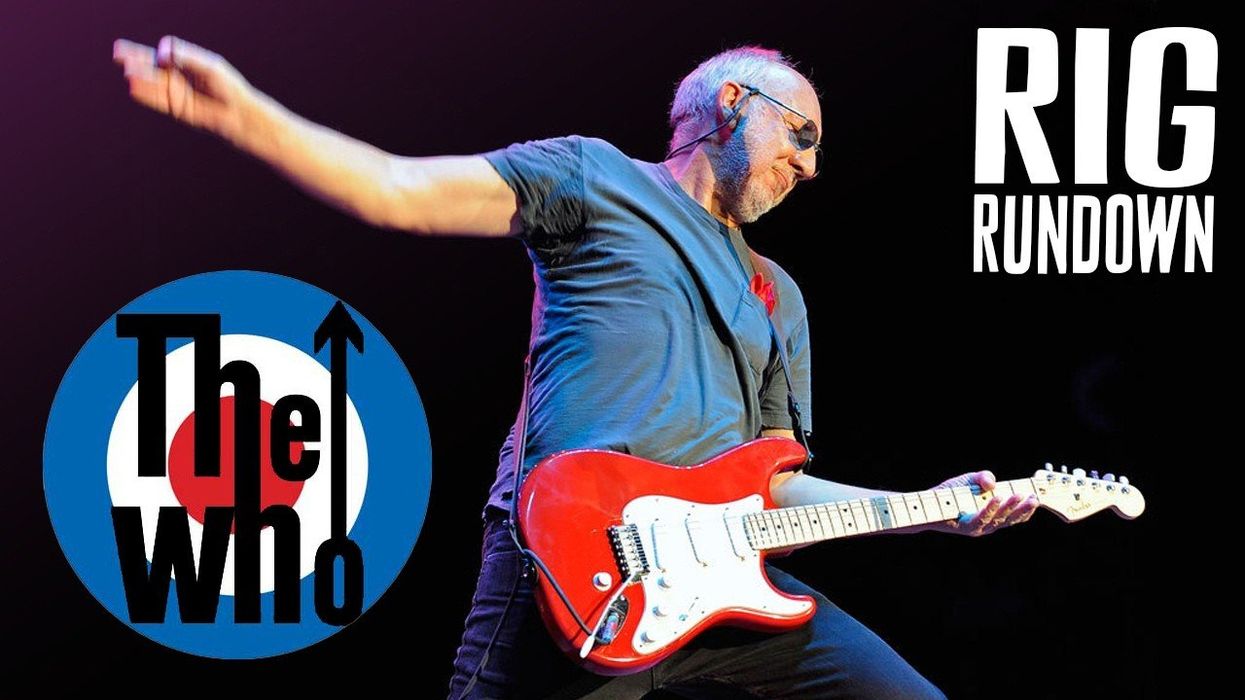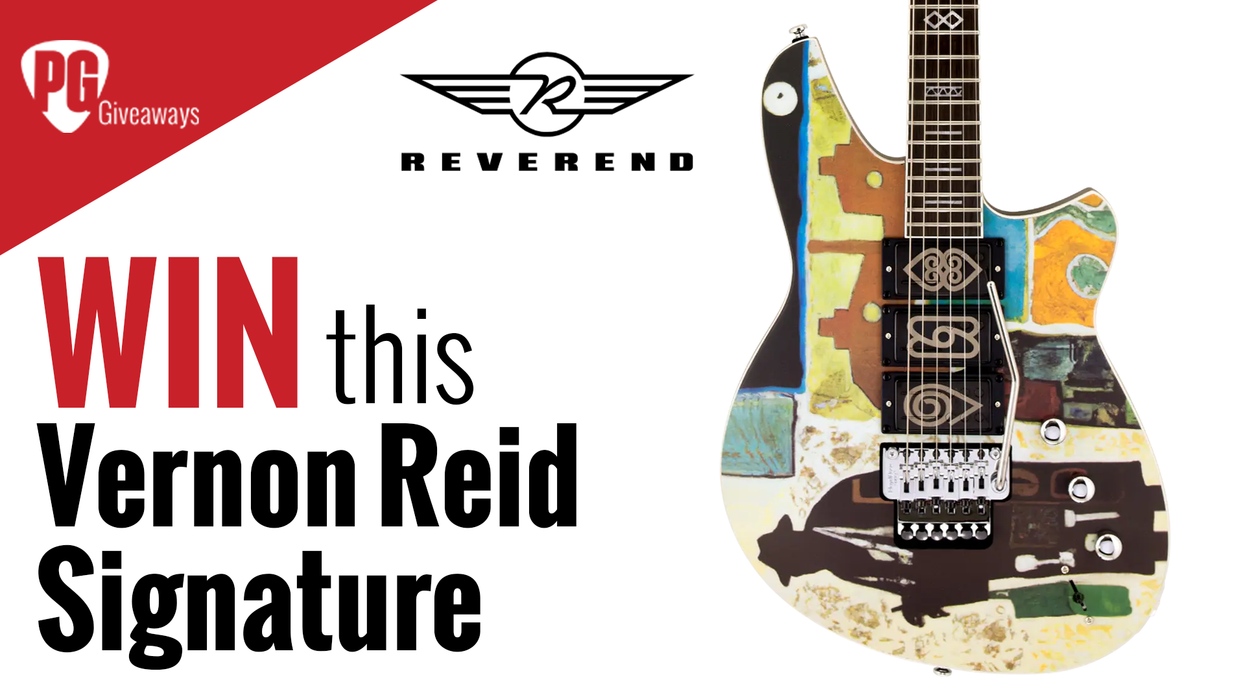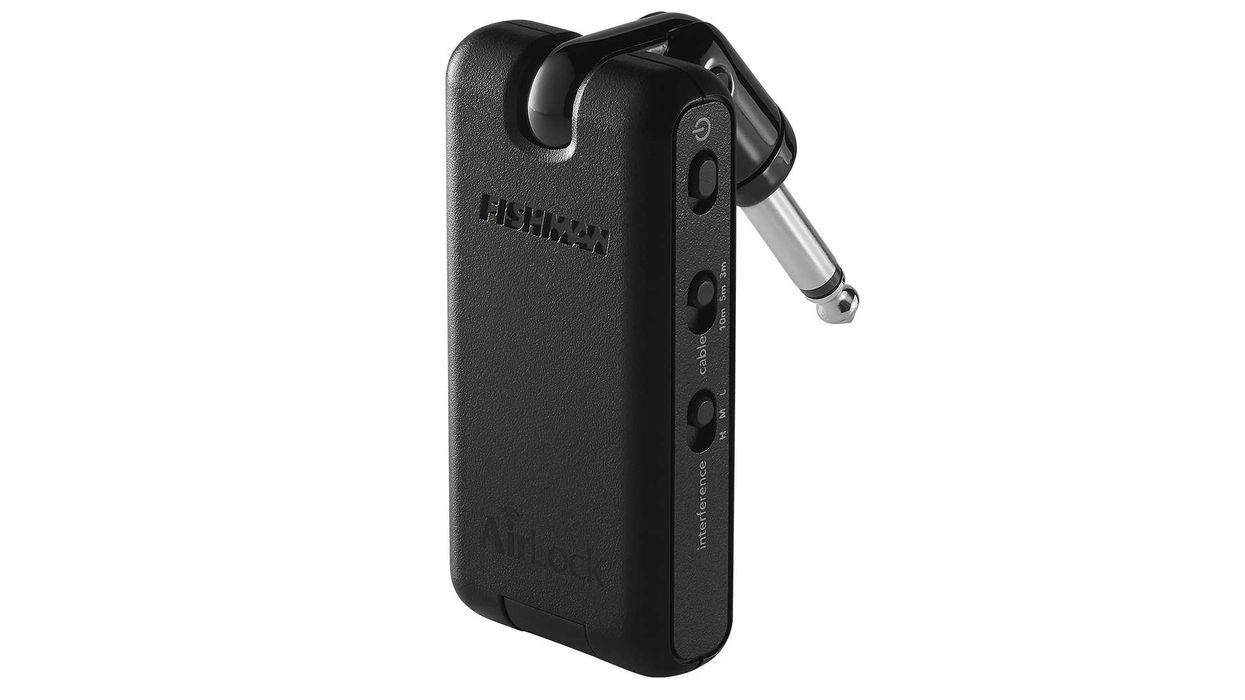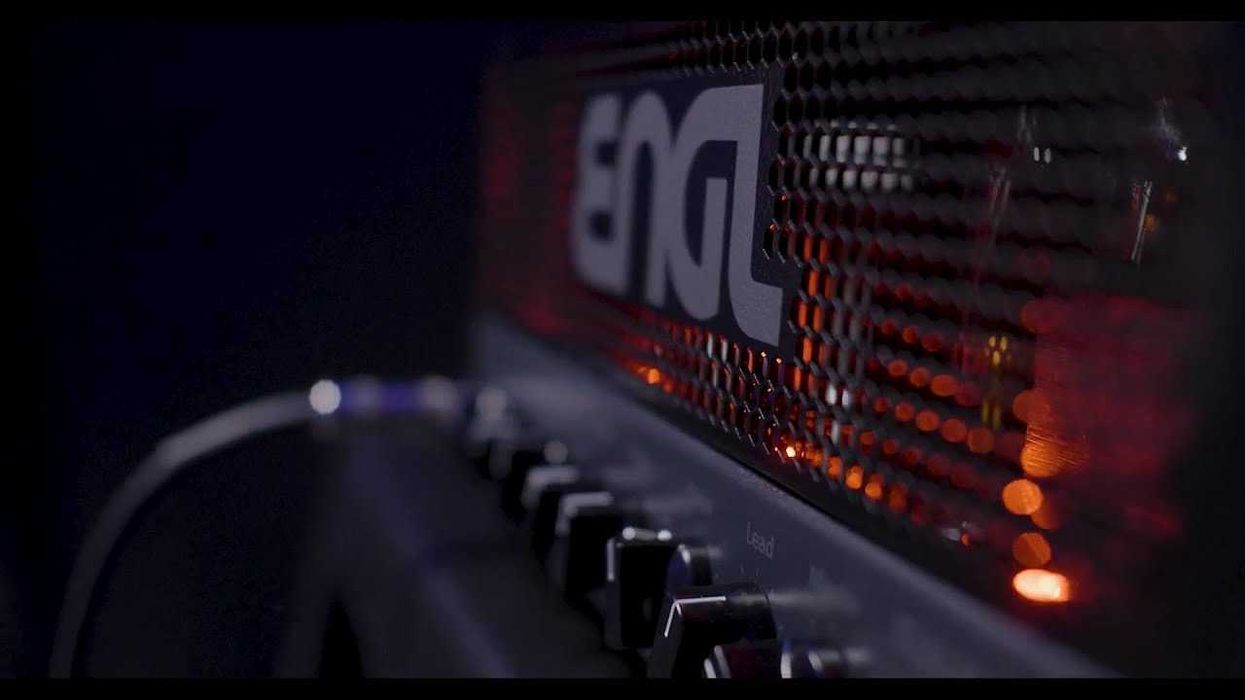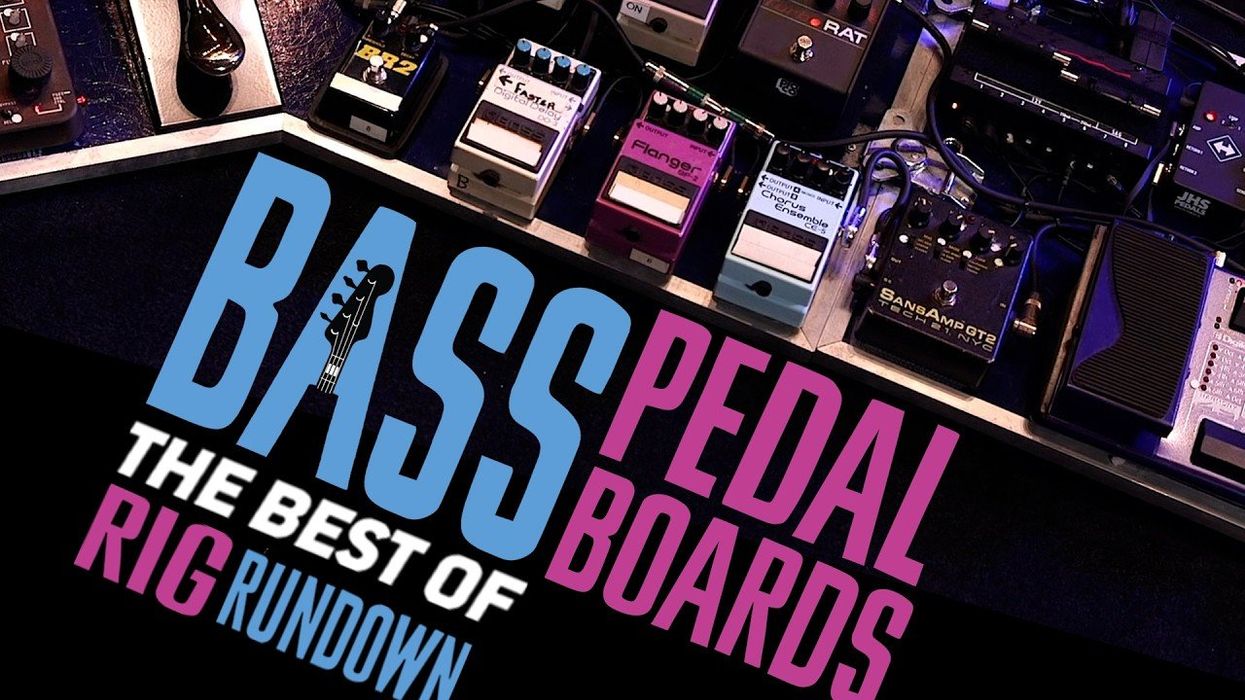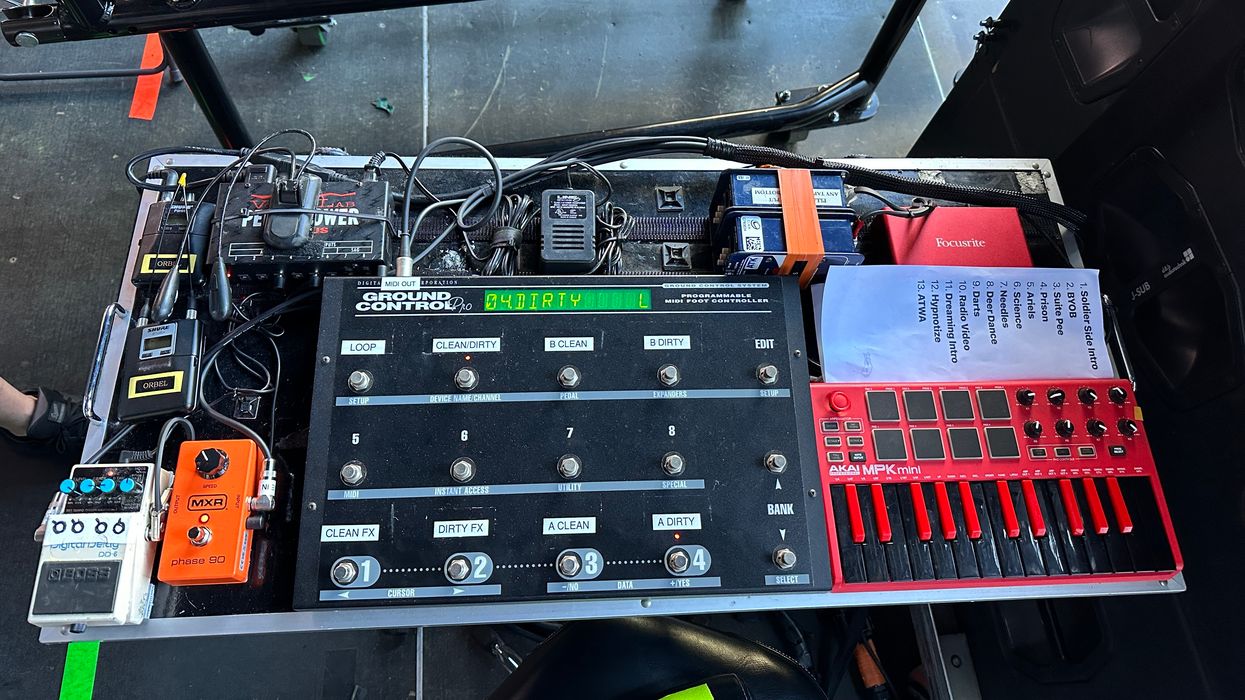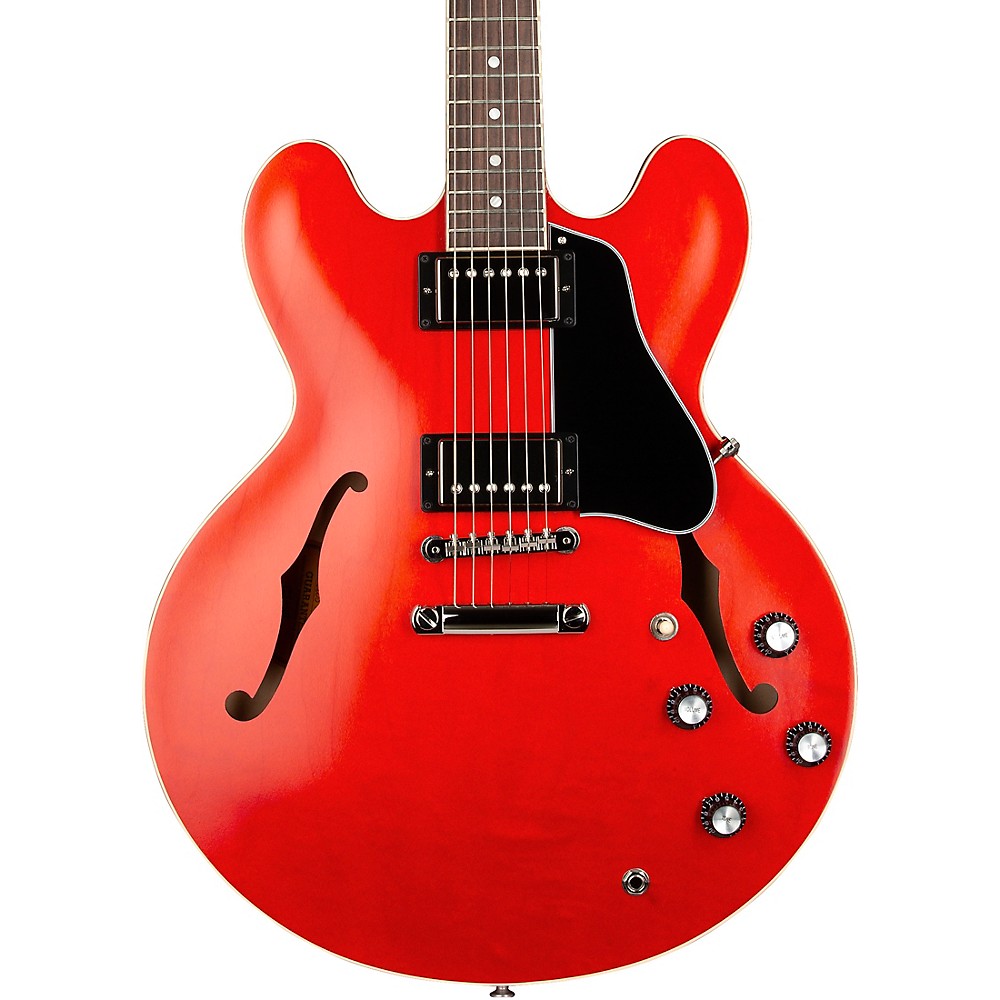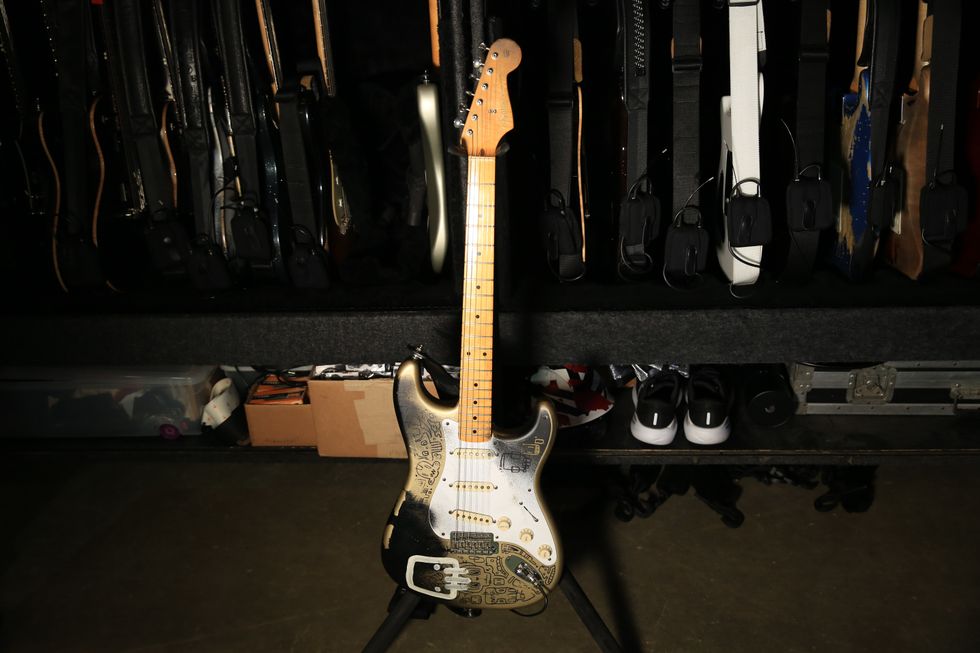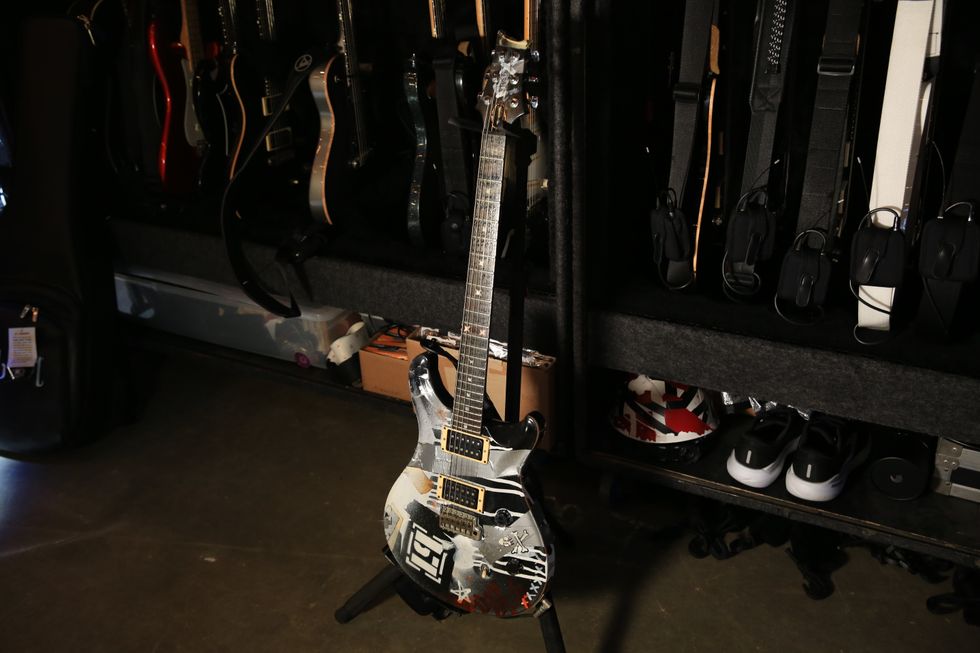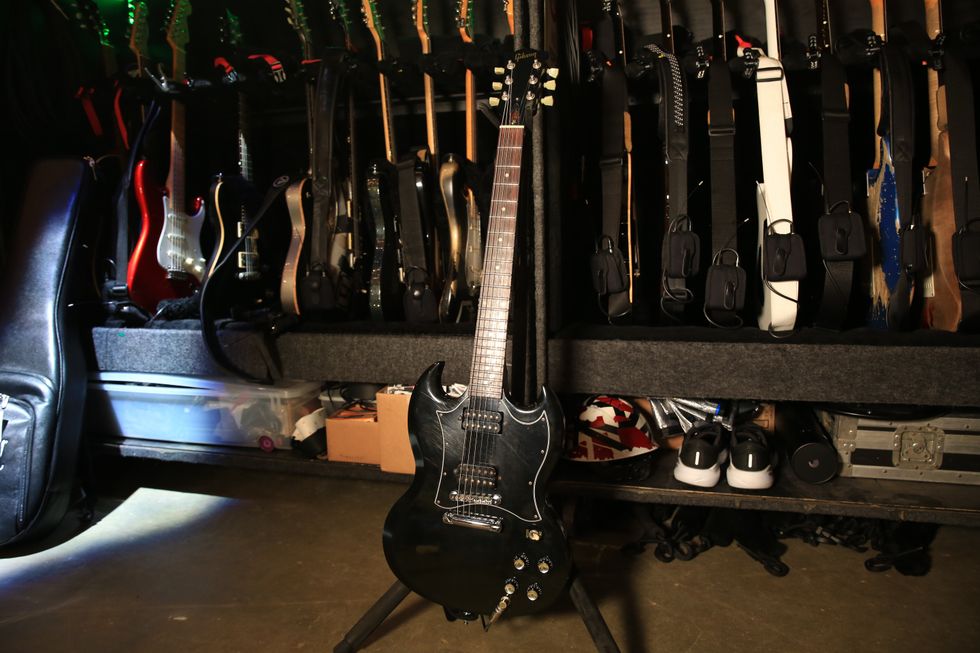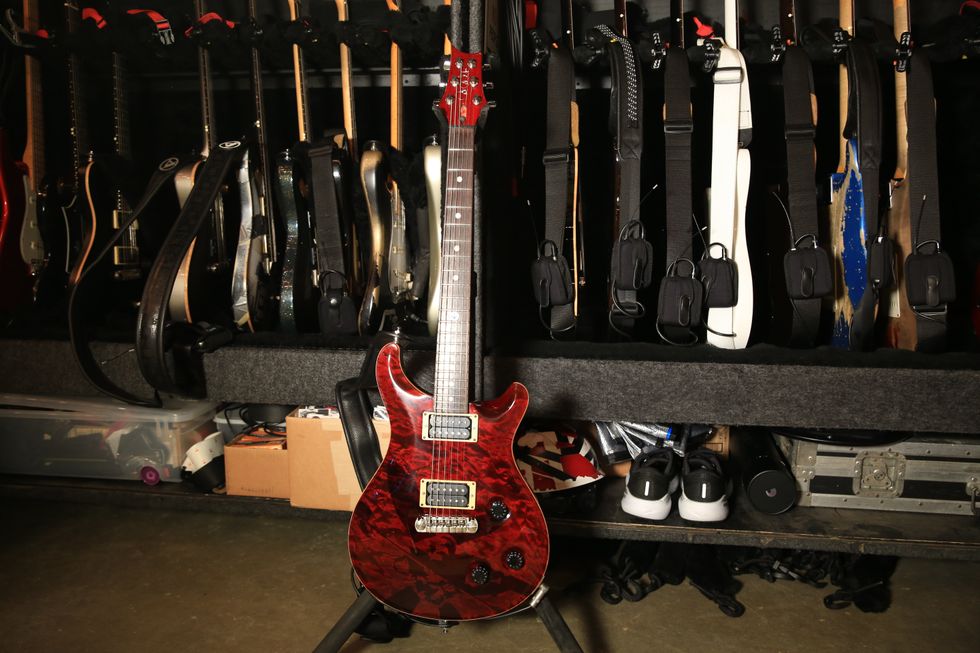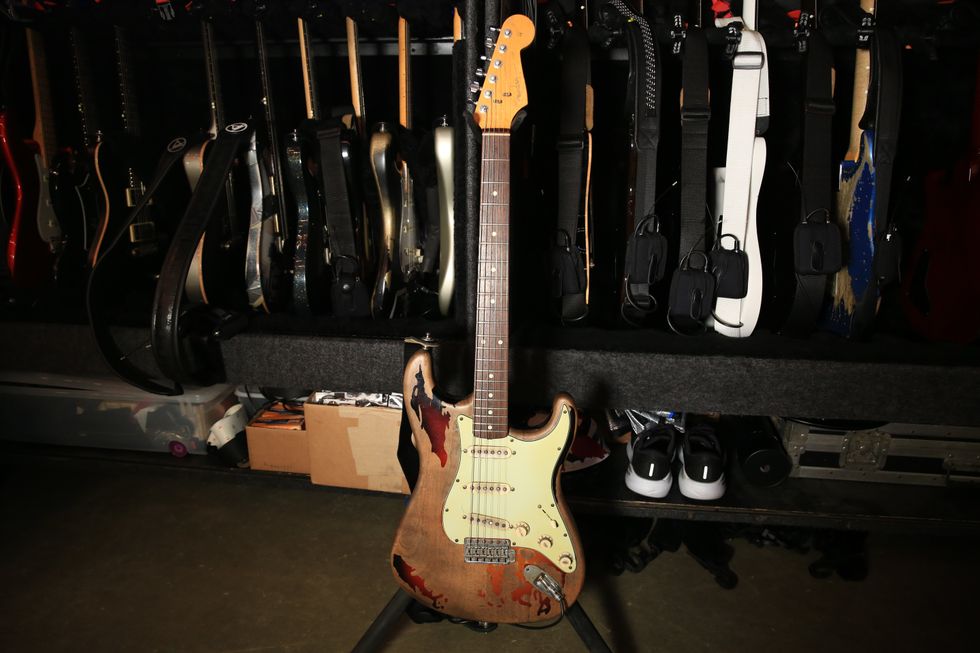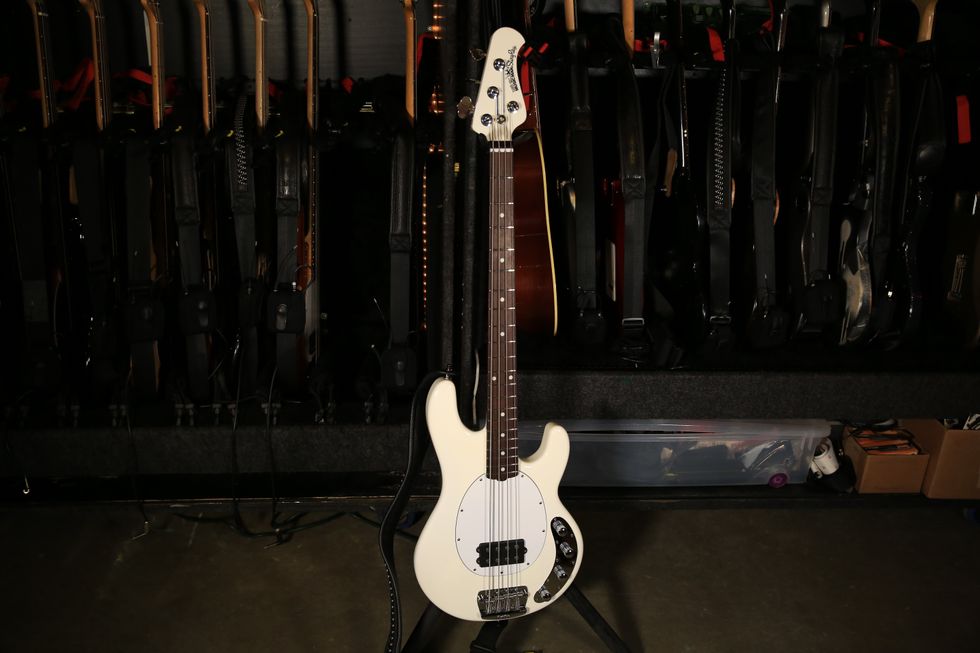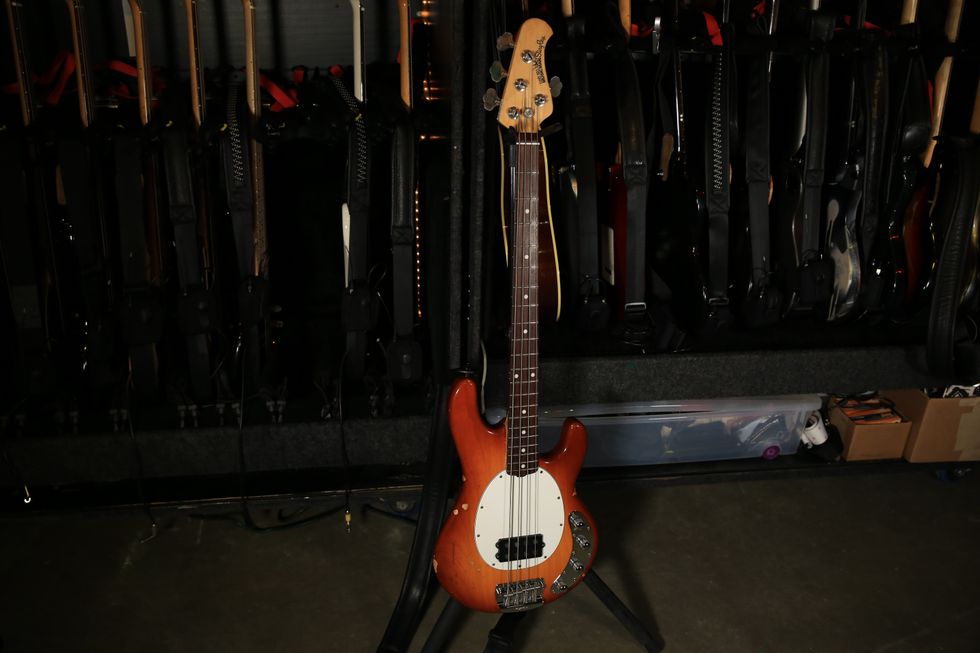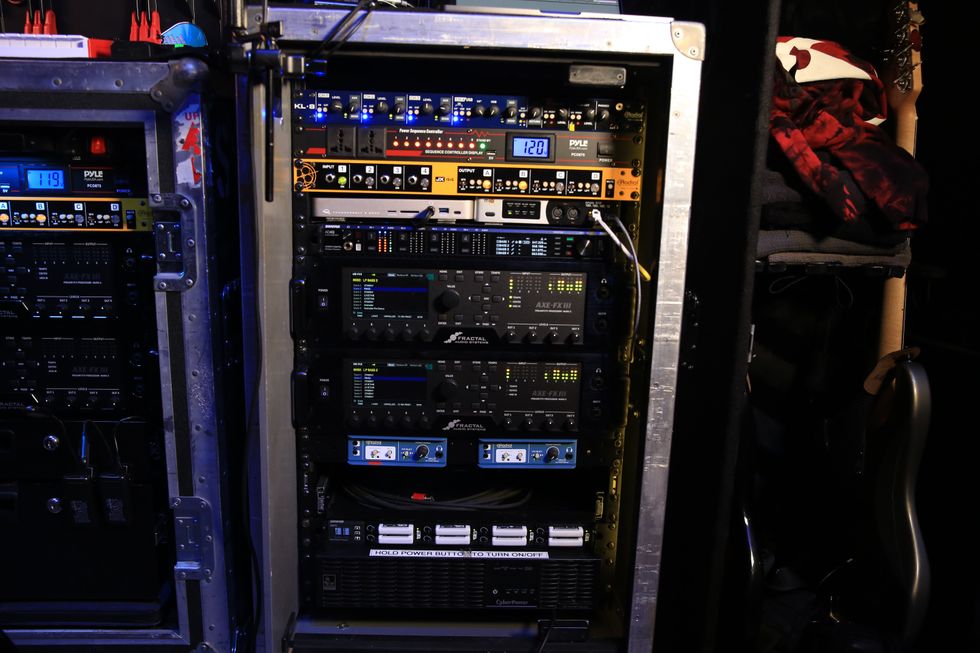The Memphis-born avant-funk bassist keeps it simple on the road with a signature 5-string, a tried-and-true stack, and just four stomps.
MonoNeon, aka Dywane Thomas Jr., came up learning the bass from his father in Memphis, Tennessee, but for some reason, he decided to flip his dad’s 4-string bass around and play it with the string order inverted—E string closest to the ground and the G on top. That’s how MonoNeon still plays today, coming up through a rich, inspiring gauntlet of family and community traditions. “I guess my whole style came from just being around my grandma at an early age,” says Thomas.His path has led him to collaborate with dozens of artists, including Nas, Ne-Yo, Mac Miller, and even Prince, and MonoNeon’s solo output is dizzying—trying to count up his solo releases isn’t an easy feat. Premier Guitar’s Chris Kies caught up with the bassist before his show at Nashville’s Exit/In, where he got the scoop on his signature 5-string, Ampeg rig, and simple stomp layout, as well as some choice stories about influences, his brain-melting playing style, and how Prince changed his rig.
Brought to you by D’Addario.
Orange You Glad to See Me?
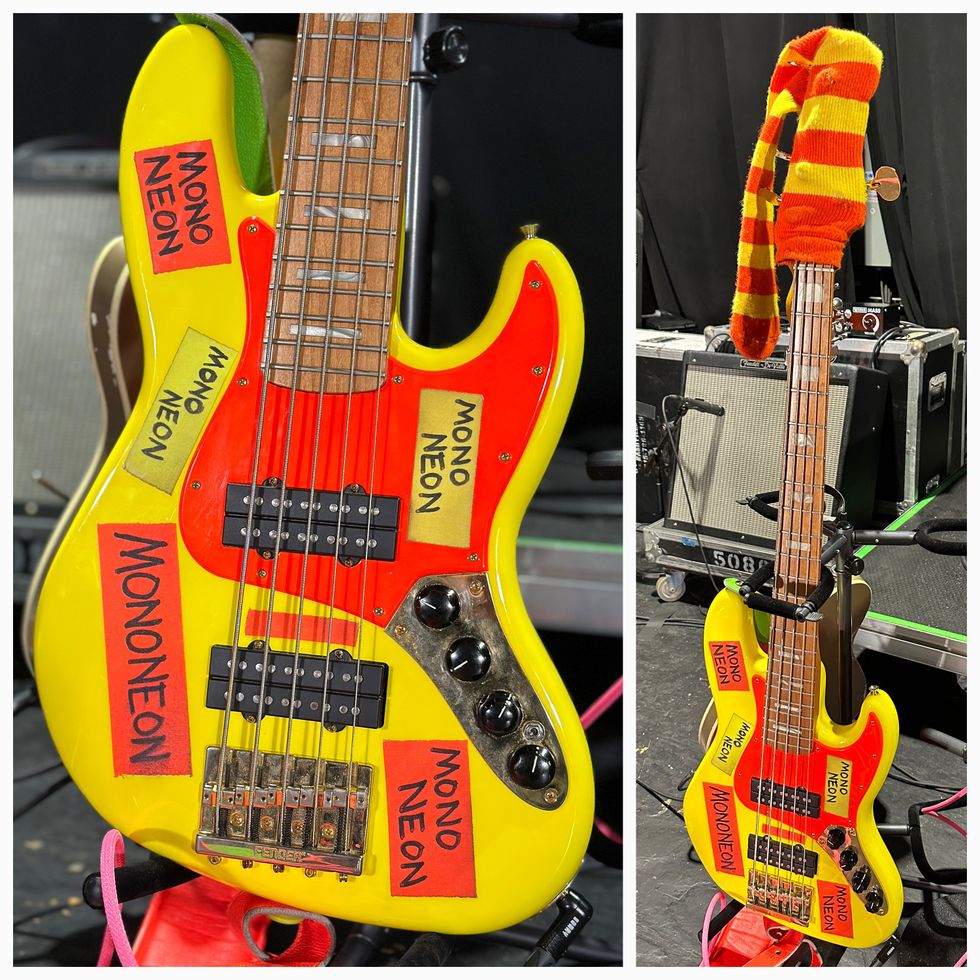
This Fender MonoNeon Jazz Bass V was created after a rep messaged Thomas on Instagram to set up the signature model, over which Thomas had complete creative control. Naturally, the bass is finished in neon yellow urethane with a neon orange headstock and pickguard, and the roasted maple neck has a 10"–14" compound radius. It’s loaded with custom-wound Fireball 5-string Bass humbuckers and an active, 18V preamp complete with 3-band EQ controls. Thomas’ own has been spruced up with some custom tape jobs, too. All of MonoNeon's connections are handled by Sorry Cables.
Fade to Black
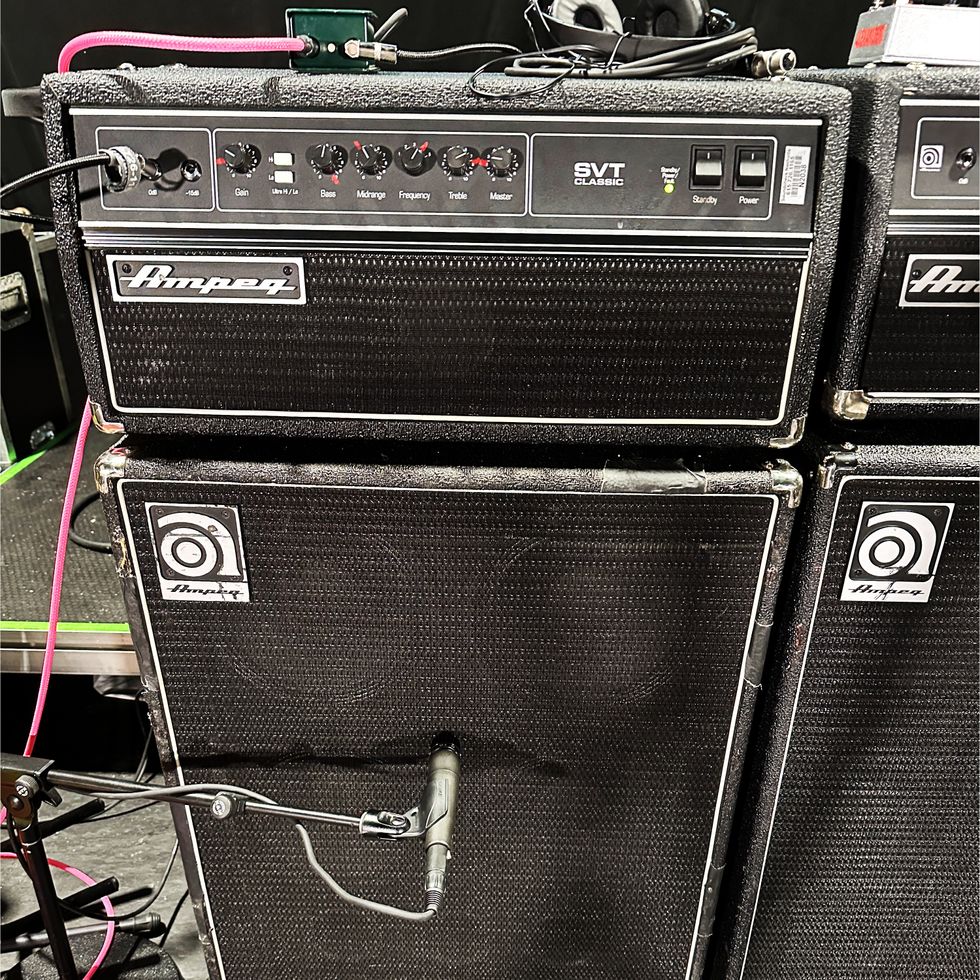
MonoNeon’s Ampeg SVT stack isn’t a choice of passion. “That’s what they had for me, so I just plugged in,” he says. “That’s what I have on my rider. As long as it has good headroom and the cones don’t break up, I’m cool.”
Box Art
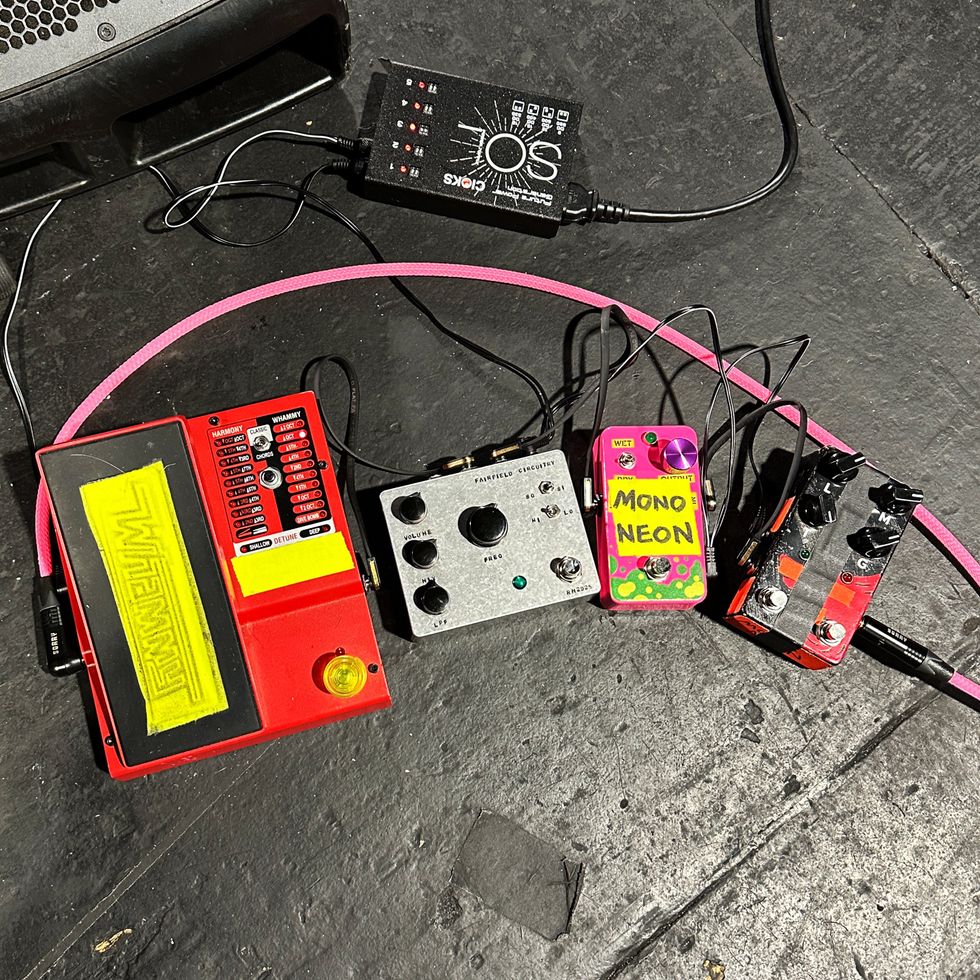
MonoNeon’s bass isn’t the only piece of kit treated to custom color jobs. Almost all of his stomps have been zhuzhed up with his eye-popping palette.
Thomas had used a pitch-shifting DigiTech Whammy for a while, but after working with Paisley Park royalty, the pedal became a bigger part of his playing. “When I started playing with Prince, he put the Whammy on my pedalboard,” Thomas explains. “After he passed, I realized how special that moment was.”
Alongside the Whammy, MonoNeon runs a Fairfield Circuitry Randy’s Revenge (for any time he wants to “feel weird”), a literal Fart Pedal (in case the ring mod isn’t weird enough, we guess), and a JAM Pedals Red Muck covers fuzz and dirt needs. A CIOKS SOL powers the whole affair.





